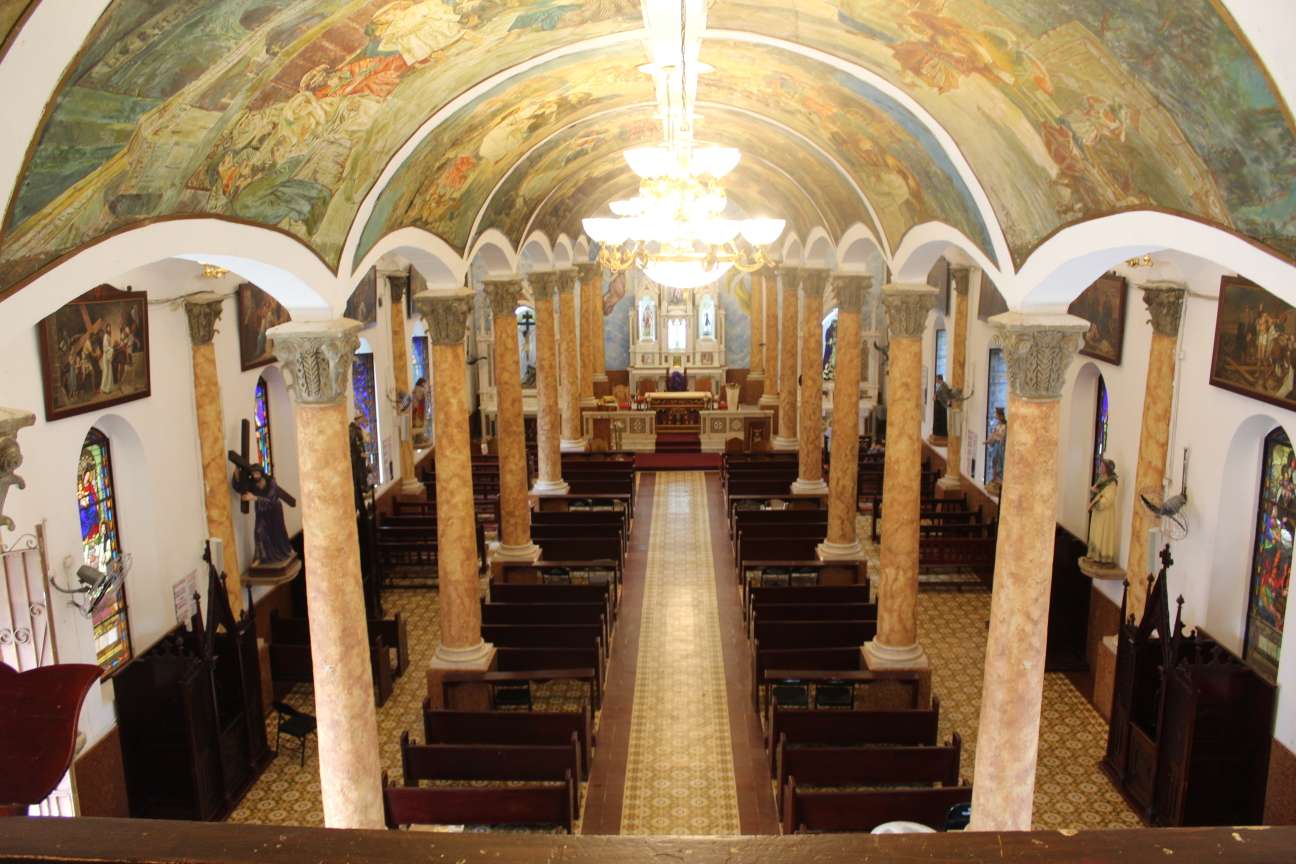Atalaya is the smallest of the districts in the province of Veraguas. About the origins of its foundation, there are various dates that establish it in the years of 1569, 1614 or 1780, while its founders include Alvaro Carvajal, Martín Delgado and Fray Francisco Gaspar Rodriguez y Valderas, among others.
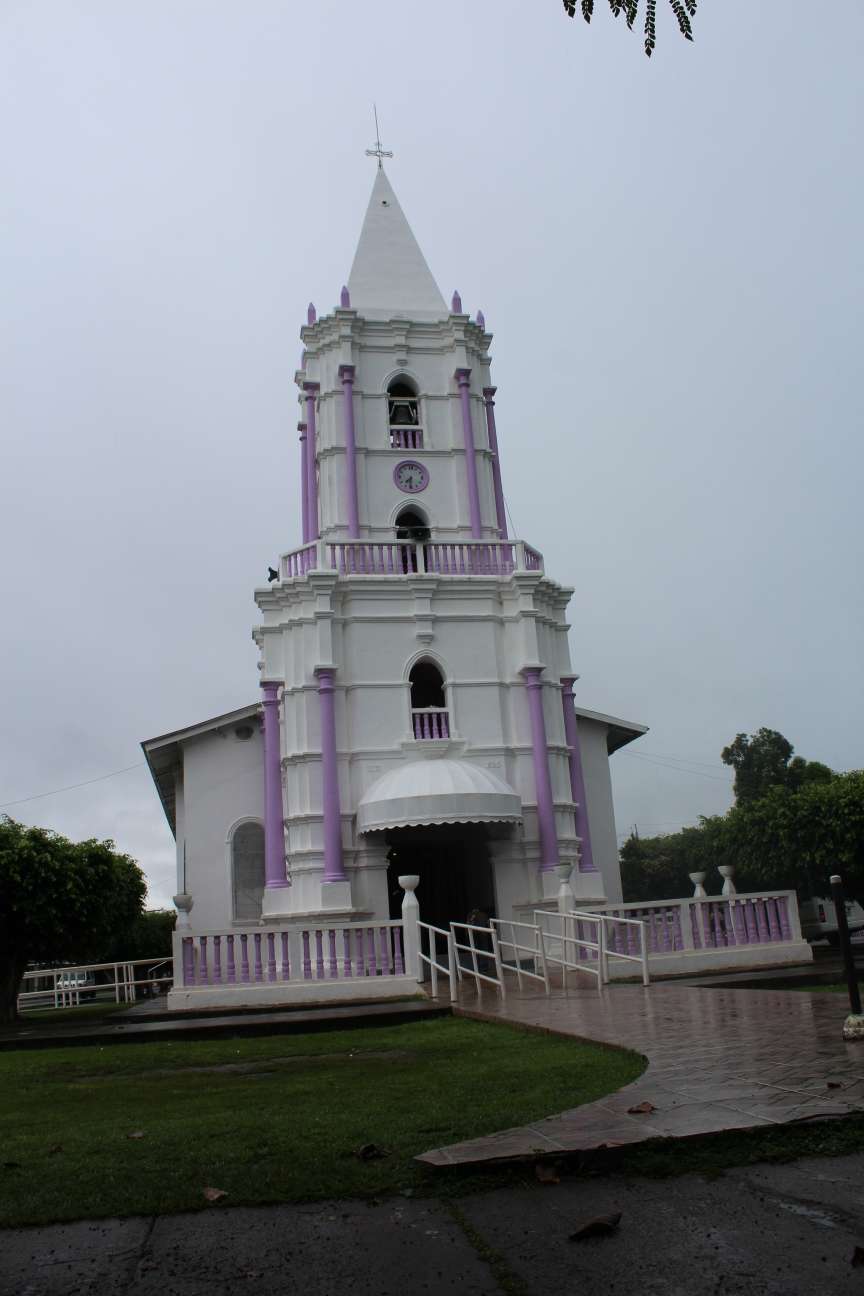
Ancient Indigenous People
According to what was written by Dr. Alfredo Castillero Calvo in his work entitled: “Conquest, Evangelization and Resistance”, the oldest references to the population date back to when it was defined as an indigenous town in the Veraguas region, barely populated.
Bishop Pedro Mega in his work: “The Church of Our Father Jesus Nazarene of Atalaya” points out that the name Atalaya was given by the Spanish because the town is on a hill, from where you can watch the surroundings.
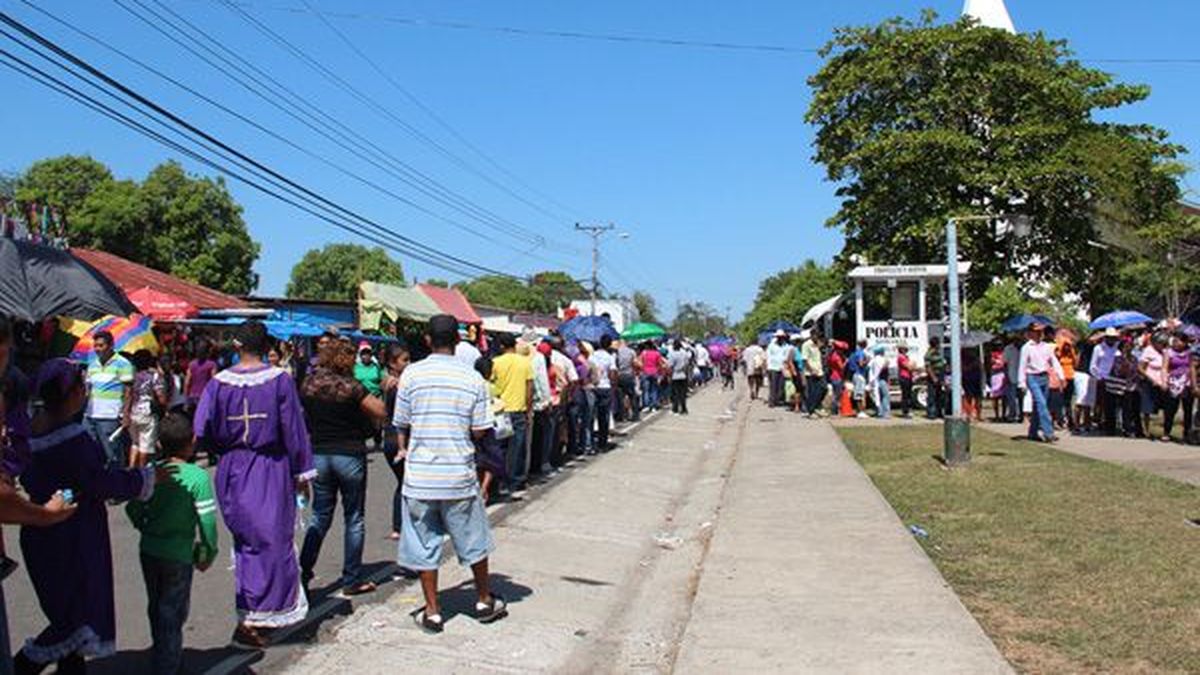
The Great Pilgrimage
If there is a place in Panama where religious tourism is a way of living, generating experiences and moving the regional economy, it is in Atalaya. Every year more than 200,000 people gather in the largest procession in Panama, the “Fiesta in Honor of Jesus Nazareno” in Atalaya.
Every First Sunday of Lent the town receives thousands of visitors who pack the Minor Basilica of Atalaya to thank Jesus Nazarene for the miracles granted; from financial aid to highly fatal diseases. Most do it by walking long distances to pay for miracles or make petitions to the Christ, from other provinces, even from Panama City, more than 250 kilometers away. It is easy to identify many pilgrims on their way to Atalaya by the particular purple tunic they wear when walking along the avenues, mainly the Panamerican highway.
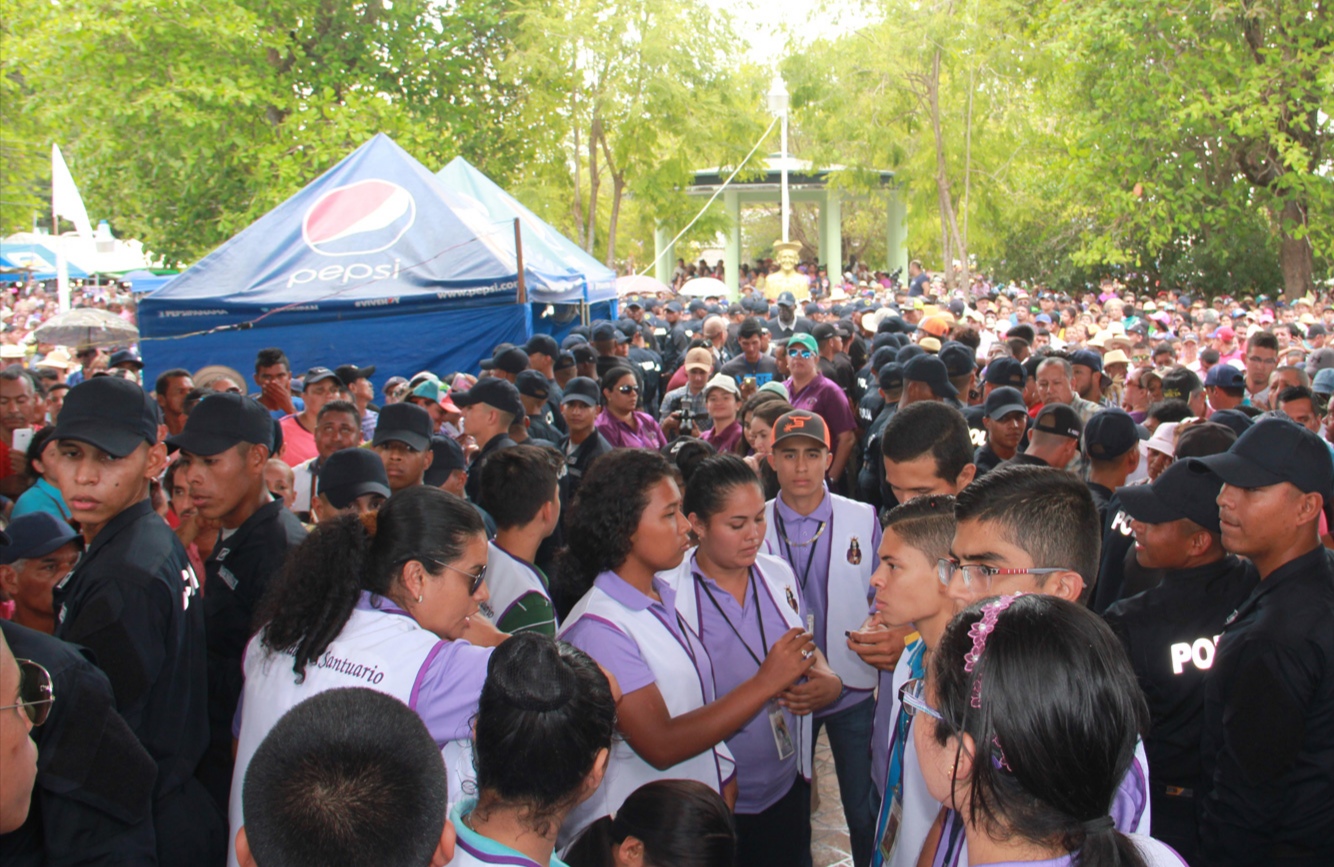
The Christ that Attracts Thousands of Visitors
Jesus Nazareno of Atalaya, popularly known as El Nazareno, is the image by which pilgrims from all over the country, as well as from abroad, gather to venerate it from Ash Wednesday (the day after carnival) until Palm Sunday when it ends with the largest procession in Panama.
Although there is no exact date on the beginning of the devotion to the Atalaya Christ, it is known that as early as 1730 the town was visited by pilgrims from Villa de Los Santos, Montijo, Las Palmas, La Mesa, Santiago and San Francisco. At that time, the image of the Christ was venerated in a small hut or chapel built with wood and leaves.
It was thus, according to the documents, that this place in the province of Veraguas became, from the end of the 17th century by the work and grace of the Nazarene, a true center of religiosity and a refuge of peace for the Catholics of Panama.
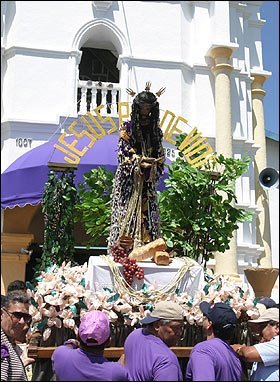
History of the Christ of Atalaya
In the Atalaya Magazine, Land of Pilgrims, Juan Manuel Guevara indicates that the image of Jesus Nazareno in Atalaya, in a ranch, dates back to 1730, when the fervent devotion of that town and others from the interior already existed. A document signed in 1752 by the steward Jose Nuñez de Arco cites the pilgrimages from the towns of Montijo, Las Palmas, Ducal City of Veraguas, Villa de Los Santos, Las Tablas, among others, to venerate Jesus Nazareno during that year.
Based on the book by Monsignor Pedro Mega and testimonies collected by the priest Juan Jose Canovas in 1912, one of the probable theories about the arrival of the image and devotion to the Nazarene is related. Due to the quarrels between the indigenous chiefs and the Spanish, a war between both groups was registered. The Spanish promised that if they won the war, they would donate an image of Jesus Nazareno to the aborigines. And so it happened, the Spaniards won, took the image, and gave it to the indigenous people, who built a ranch and began the devotion to the Miraculous Christ, to this day. In 1964, the Atalaya temple was declared a Minor Basilica and it is the second one that exists in the entire country.
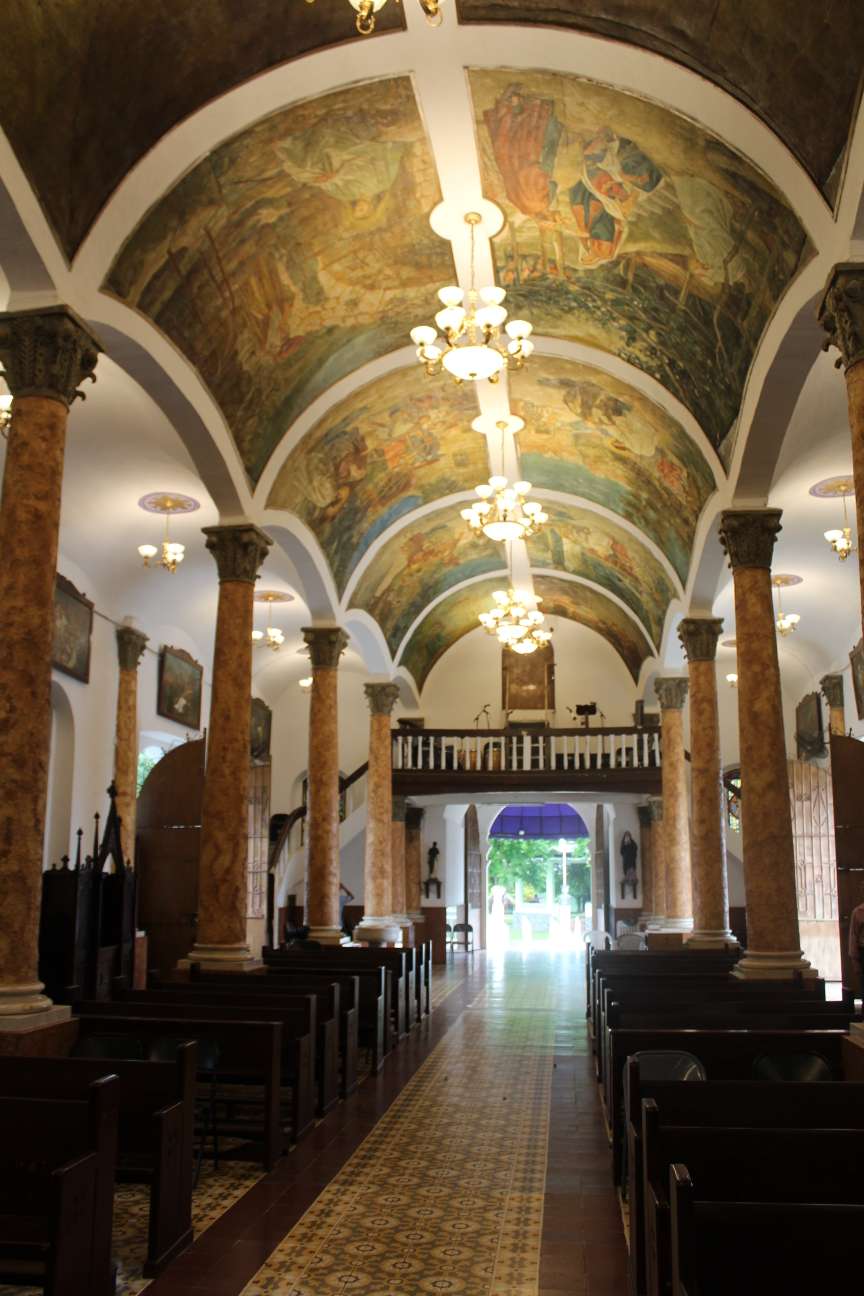
Before all the history and pilgrimage, thousands of people visit this beautiful town to visit the Basilica, the rest of the year outside the pilgrimage season, for its peace, the surrounding nature and the warmth of its citizens who welcome all visitors.


